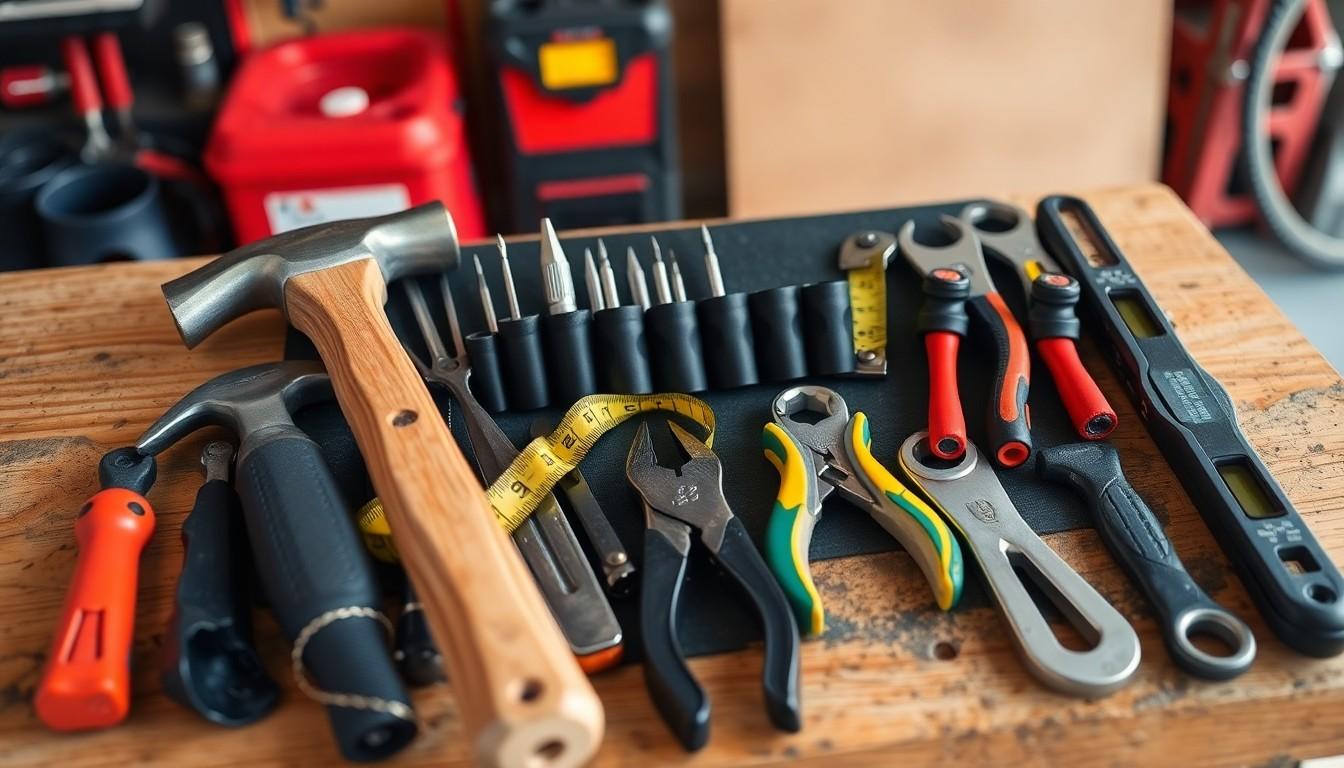Owning a home can feel like a never-ending game of Whac-A-Mole, where every time you fix one issue, another pops up to take its place. But fear not! With a little DIY spirit and some handy tips, homeowners can tackle those pesky maintenance tasks without losing their sanity—or their wallets.
Imagine strutting through your home like a DIY superhero, armed with tools and knowledge that’ll save you from costly repairs. From squeaky doors to leaky faucets, these straightforward maintenance tips will turn anyone into a home improvement whiz. So roll up those sleeves and get ready to transform your abode into a well-oiled machine. After all, who wouldn’t want to impress friends with their newfound skills while saving a few bucks along the way?
DIY Home Maintenance Tips
Homeowners face various challenges, making maintenance a crucial aspect of homeownership. Embracing a DIY mindset simplifies upkeep, ensuring that minor issues don’t escalate.
Importance of Regular Maintenance
Regular maintenance keeps homes in optimal condition. Neglecting tasks can lead to costly repairs and bigger problems. For example, ignoring a small leak can result in water damage and mold growth over time. Seasonal checks for roofing and HVAC systems prevent larger issues. Addressing wear and tear on appliances and fixtures ensures everything functions smoothly. Maintaining a routine not only extends the life of home features but also enhances safety for all occupants.
Benefits of DIY Approaches
Choosing DIY methods promotes self-sufficiency and cost savings. Homeowners can complete simple repairs, like patching walls or fixing faucets, without hiring costly professionals. Gaining hands-on experience builds confidence in managing home issues. DIY projects often foster creativity, allowing individuals to personalize their spaces while learning valuable skills. Acquiring tools for home maintenance becomes an investment; essential tools make future tasks easier and more efficient. Ultimately, taking a DIY approach cultivates pride in homeownership, giving homeowners control over their living environment.
Essential Tools for DIY Maintenance

Equipping a home for DIY maintenance involves gathering the right tools. Homeowners can tackle repairs more efficiently with a well-stocked toolkit.
Must-Have Tool Kit
A basic tool kit contains essential instruments. Include a hammer for driving nails and a set of screwdrivers for various fasteners. A tape measure ensures accurate measurements, while pliers provide grip and leverage. Socket wrenches allow for easy tightening or loosening of nuts and bolts. A utility knife proves invaluable for cutting tasks. Consider adding a level to ensure surfaces are straight. Each tool plays a vital role in tackling typical household tasks.
Safety Equipment
Prioritizing safety while performing DIY projects is essential. Homeowners should always wear safety glasses to protect their eyes from debris. Gloves help prevent cuts and scrapes during repairs. Dust masks are crucial when sanding or working with particles. Hearing protection is recommended when using power tools. Keeping a first aid kit handy provides reassurance during unexpected situations. Safety equipment protects individuals and ensures a confident and secure DIY experience.
Common DIY Home Maintenance Tasks
Homeowners can tackle various DIY maintenance tasks to ensure their properties remain in top shape. Regular attention to these areas minimizes potential problems and enhances comfort.
Interior Maintenance Tips
Check air filters every 1-3 months to maintain airflow efficiency. Cleaning or replacing filters improves HVAC performance and indoor air quality. Address squeaky doors by tightening hinges or applying lubricant. This simple fix enhances usability and prevents further damage. Inspect smoke and carbon monoxide detectors monthly, ensuring batteries are functional. A quick test saves lives in emergencies. Routine cleaning of gutters helps prevent clogs that lead to water damage. Regular dusting and vacuuming lastingly embellish living spaces.
Exterior Maintenance Tips
Inspect roofing shingles twice a year for damage or wear. Early detection prevents costly roof repairs. Check for cracks in driveways and walkways, applying sealant to prolong lifespan. Proper sealing protects against weather elements. Maintain landscaping by trimming overgrown bushes and trees. Well-kept outdoor spaces enhance curb appeal. Clean outdoor lighting fixtures periodically to increase visibility and safety. Perform regular inspections of the home’s foundation for signs of cracks or moisture. Addressing these issues promptly maintains structural integrity.
Seasonal Maintenance Checklist
Maintaining a home requires attention throughout the year. Completing seasonal tasks can prevent significant repairs and enhance comfort.
Spring and Summer Tasks
Spring and summer are ideal for inspection and repairs. Homeowners should clean gutters to ensure proper drainage. Check air conditioning units to confirm optimal performance. Clear debris from outdoor spaces to promote safety. Inspect windows and doors for gaps to improve energy efficiency. Additionally, reseal decks to protect against weather damage. Performing these tasks nurtures the home and supports its structural integrity.
Fall and Winter Preparation
Preparing for fall and winter protects against adverse weather conditions. Inspect roofing materials to detect damage or wear. Clean and store outdoor furniture before the first frost. Service heating systems to ensure reliable warmth during cold months. Weatherstrip doors and windows to prevent drafts. Also, drain and store garden hoses to prevent freezing. These preparations promote overall safety and comfort throughout the seasons.
DIY Resources and Learning
Homeowners seeking to enhance their DIY skills can explore various resources tailored for learning and improvement.
Online Tutorials and Videos
Numerous online platforms offer extensive tutorials and videos. Websites such as YouTube host channels dedicated to home maintenance projects, providing step-by-step guidance. Blogs also deliver written instructions along with visuals, making complex tasks easier to follow. Many of these resources cater to different skill levels, empowering beginners with foundational knowledge while offering advanced tips for experienced DIYers. Engaging with these materials helps individuals build confidence and expertise, allowing them to tackle maintenance tasks efficiently.
Community Workshops
Local community centers frequently host workshops focused on DIY skills. Participants can learn from seasoned professionals who share practical insights and techniques. Workshops often cover specific topics, such as plumbing, electrical work, or gardening basics. Connecting with fellow homeowners fosters a sense of camaraderie and mutual support. Seeking out these workshops provides valuable hands-on experience, reinforcing learning in a collaborative environment. Engaging with the community not only enhances skill sets but also encourages networking among DIY enthusiasts.
Embracing a DIY mindset can significantly enhance a homeowner’s experience. By taking on maintenance tasks themselves, individuals not only save money but also gain valuable skills that boost confidence. Regular upkeep prevents minor issues from escalating into costly repairs, ensuring a safe and comfortable living environment.
With the right tools and resources at their disposal, homeowners can tackle both interior and exterior projects effectively. Seasonal checklists and online tutorials make it easier than ever to stay on top of maintenance tasks. Ultimately, the journey of DIY home maintenance fosters a sense of pride and accomplishment, transforming a house into a truly personalized home.

